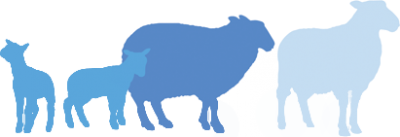Schmallenberg Guidance for Shows and Events
27th March 2012
NSA guidance for breed societies and farmers showing sheep during 2012
The Schmallenberg virus outbreaks seen over the winter of 2011/12 have given rise to concern over the movement of sheep for shows and sales, and the potential spread of the virus. Concerns are whether there are risks of sheep to sheep contact, risks of moving infected midges around the country, and risks of infected sheep passing on infection to midge populations.
The virus is relatively new and not well understood. All recommendations, veterinary and otherwise, are based on assumptions and best knowledge available. The guidance included in this paper draws on discussions with veterinarians and offers options to reduce risks but can give no guarantees.
General statements
- We live, and run our sheep businesses in, a natural world where human activity, farming activity, ecology, and weather patterns and climate all interrelate. We cannot expect to control any of these factors fully but can aim to understand lifecycles and relationships and reduce risks based on this understanding.
- Sheep farmers have varying interests and objectives relating to their sheep enterprises – while some may be prepared to reduce their own risk by not showing or selling direct from farm, for others showing and selling collectively is essential to the way they operate. It is important that sheep farmers consider the effect of their actions on others and the industry at large, however it is also important that individuals have the freedom of decision making. Regulation and statutory controls come into play when risks are clear cut and the interests of the industry are clearly best served by industry acting as one.
Key facts about Schmallenberg
- The best scientific evidence suggests that Schmallenberg virus is transmitted by biting insects; midges and mosquitoes in particular. The risk of sheep to sheep transmission appears negligible, and clearly less when sheep are not coming into physical contact with each other.
- The period when sheep show clinical signs of the virus, and when they may be potentially infective appears to be short, around 4 – 5 days after being infected. Once this clinical period is over then the sheep are likely to carry antibodies in their blood and it is unknown whether they could transmit infection to midges that may then bite them.
- The period when the virus has a serious effect on sheep is during the first 30 days of pregnancy. If infected at this time the virus may result in dead or unviable lambs. Infected at other times sheep appear to show mild symptoms (likely to be un-noticed) and recover within 4 – 5 days.
So, for shows and sales NSA recommends that sheep producers consider their situations, evaluate any risks, and take measures to reduce risks where necessary. We would encourage farmers showing and selling sheep in this period when Schmallenberg is evident to:
- Avoid presenting stock in the early stages of pregnancy
- Farmers who have experienced Schmallenberg virus on their farms this year should consider the risks of moving their sheep to central locations and speak to their vets for advice
- Watch out for the availability of serum tests to detect antibodies. This should identify sheep that have come into contact with the virus and could be used as part of a decision making process
- Only present stock showing clear signs of good health. Any sheep appearing unwell should be kept away from other stock. The use of a thermometer to check body temperature in adult sheep is unusual but temperature increase is associated with Schmallenberg virus, and thermometers are cheap and easy to use!
- Use products that may help repel biting insects from sheep. These may include approved dips, sprays, and natural repelling agents such as garlic and citronella. Natural products may be fed or used regularly and farmers may consider spraying areas showing skin several times during a day whilst at shows if they feel the risk makes it worthwhile
- Insect traps used at shows, around pens and buildings could be considered
- As always, report any unusual signs or suspicions to your vet


